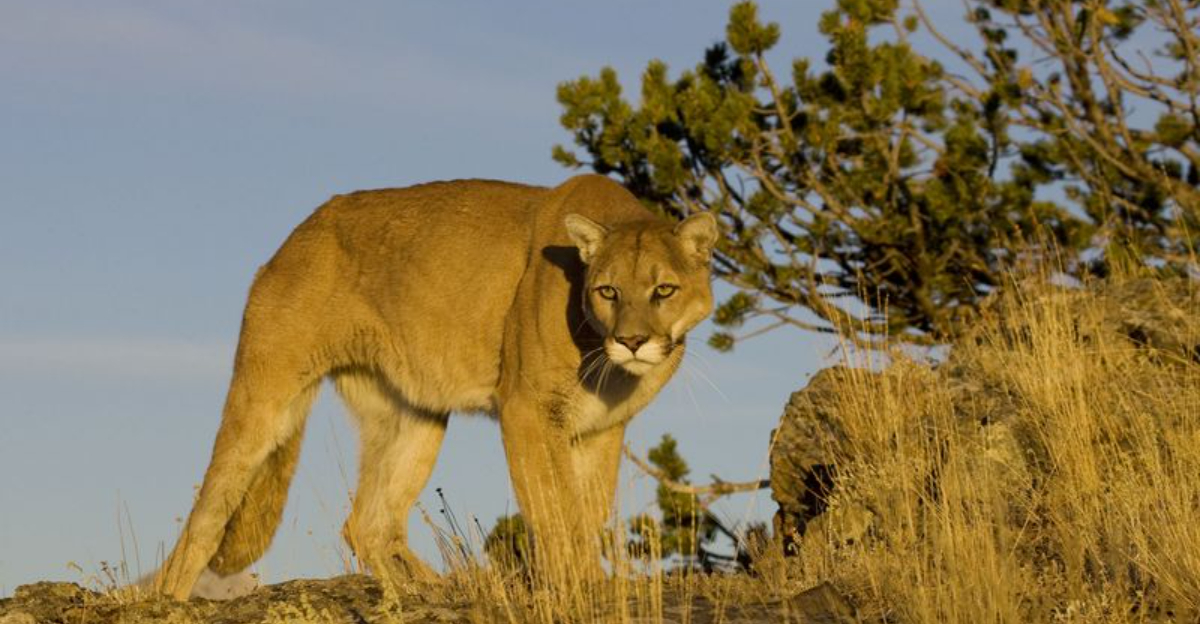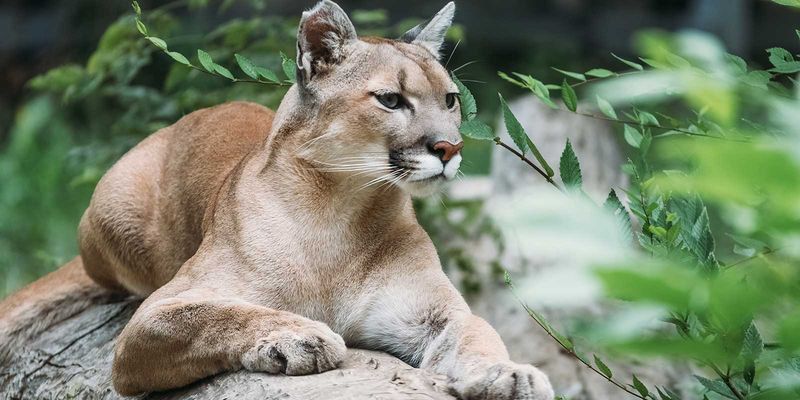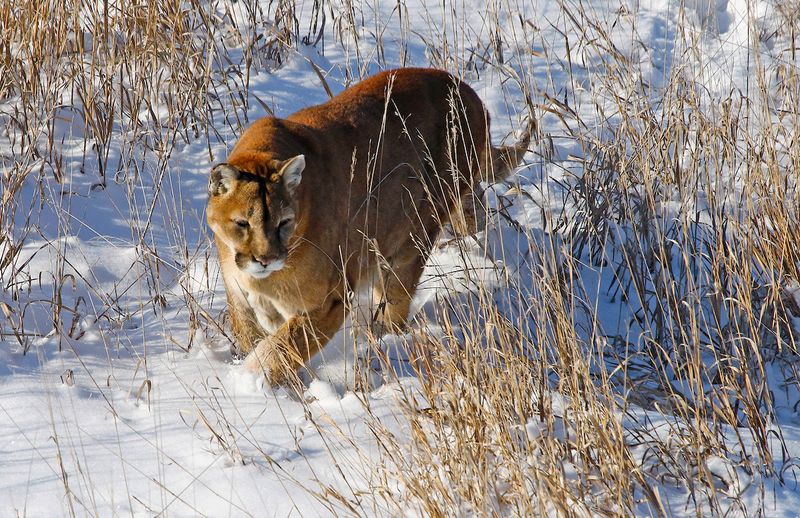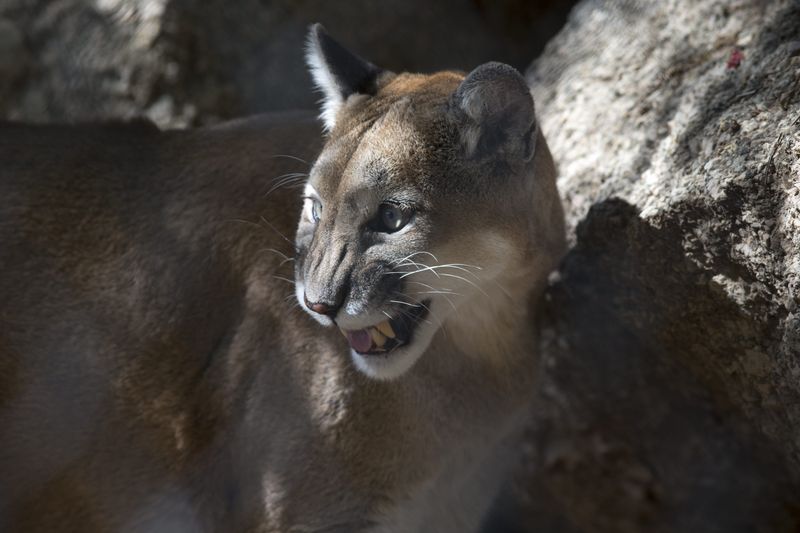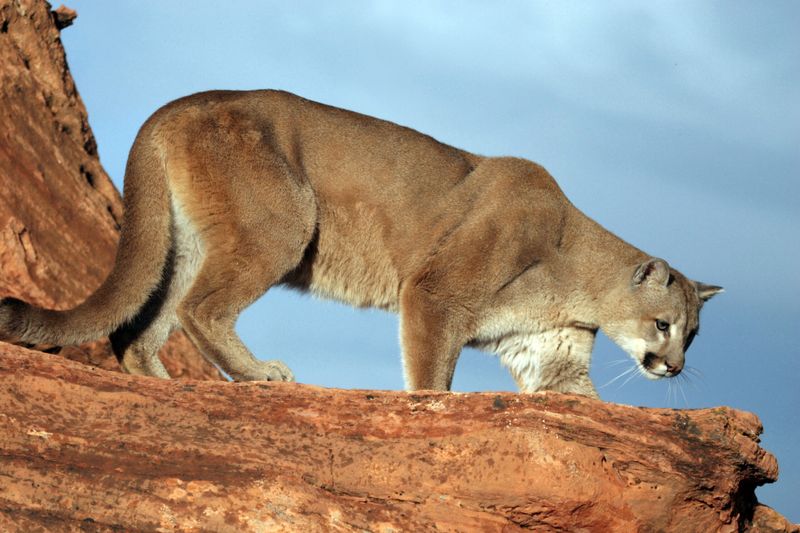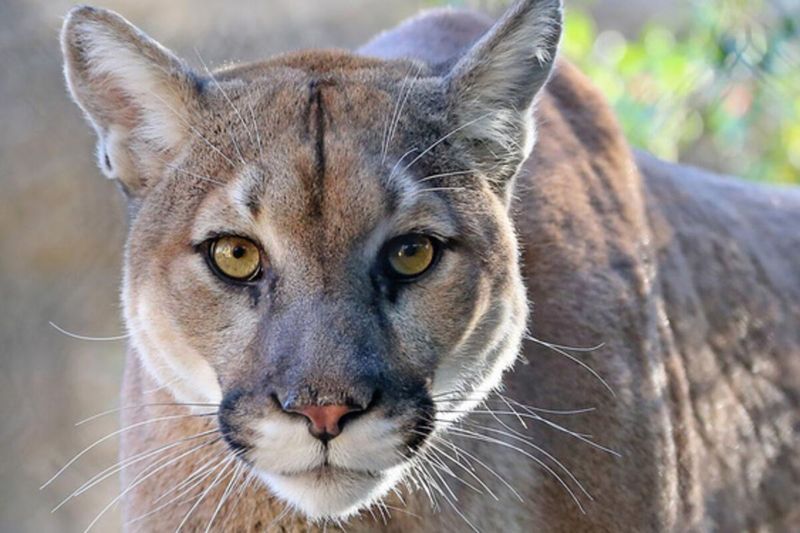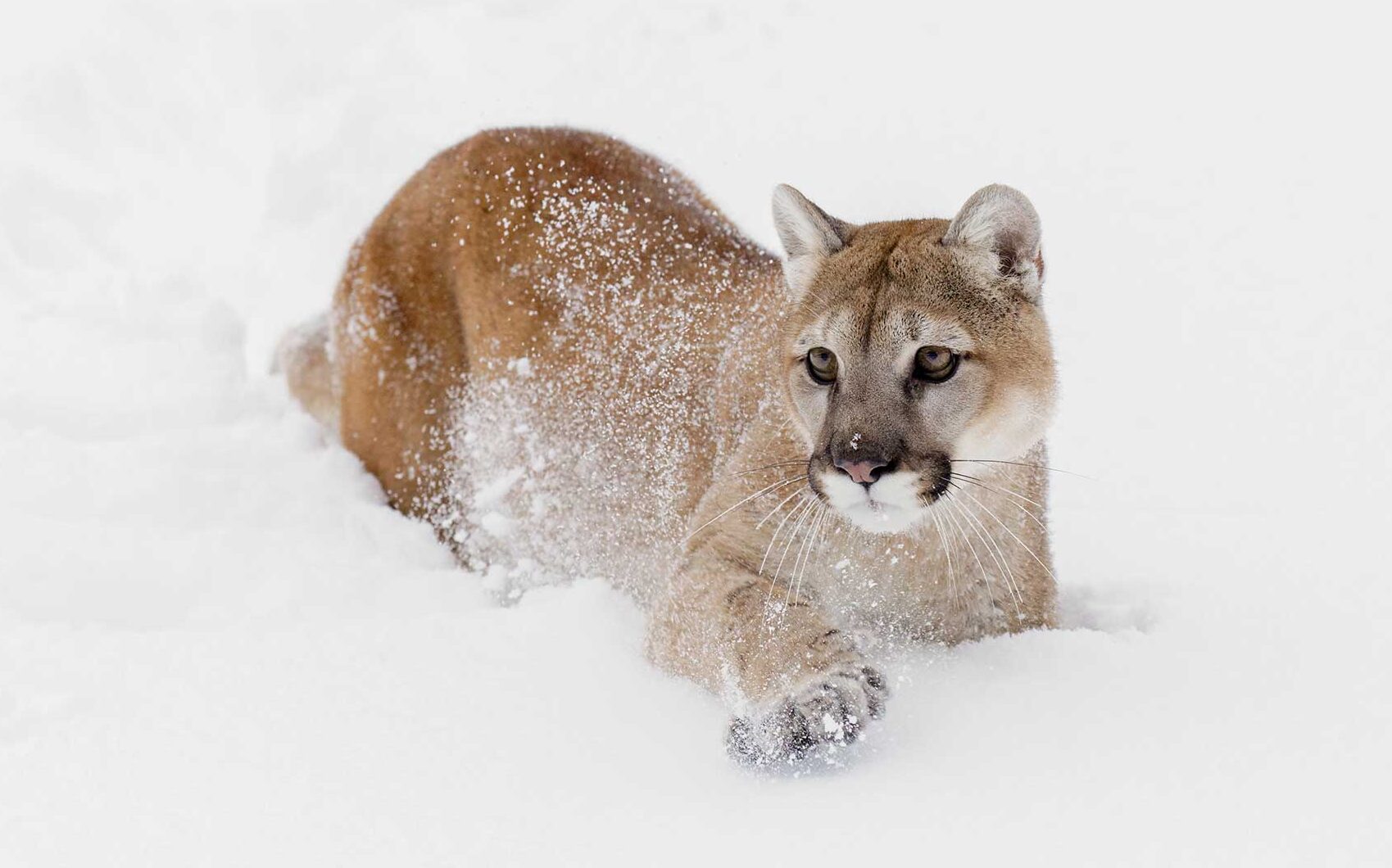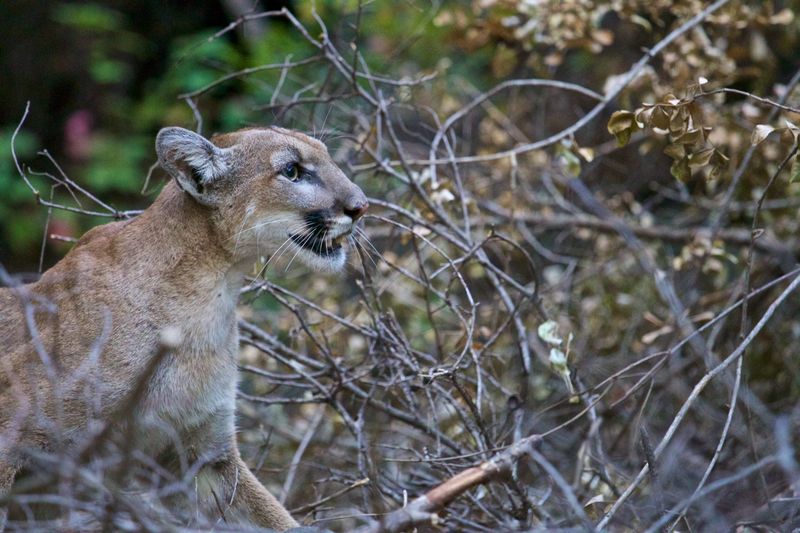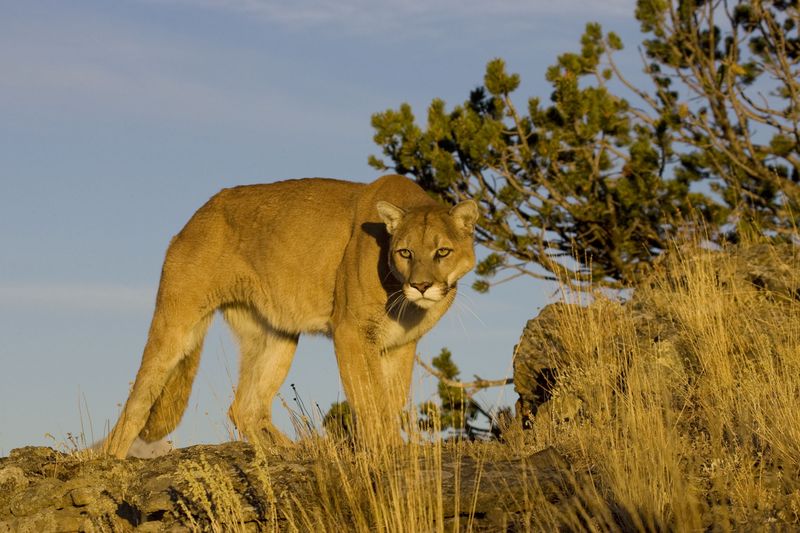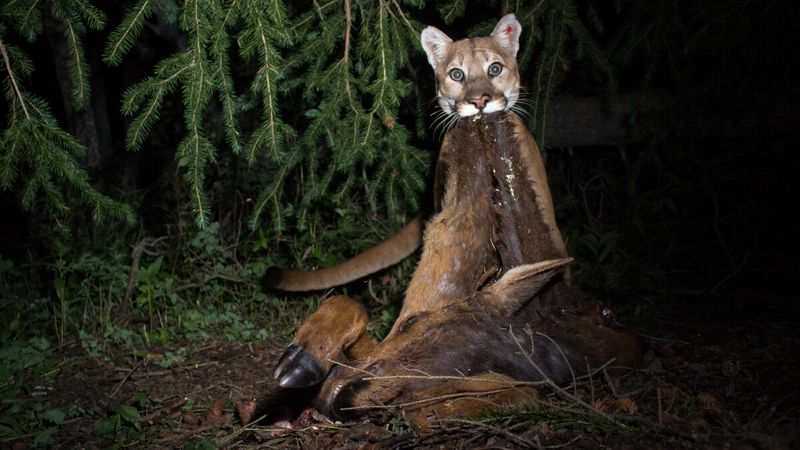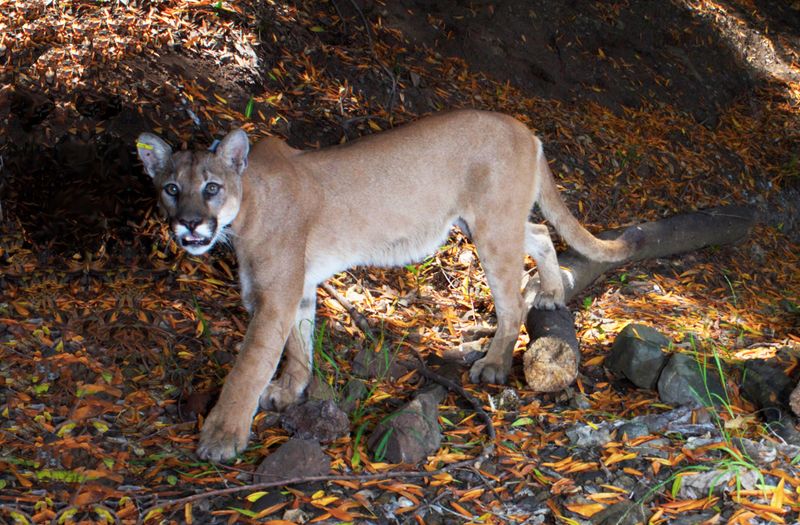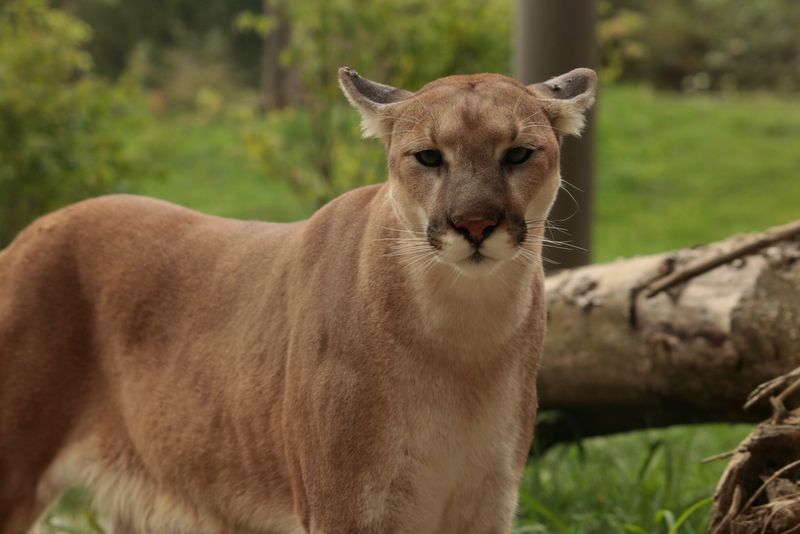📖 Table of Content:
Mountain lions, also known as cougars or pumas, are among North America’s most elusive predators. Though they once roamed nearly the entire continent, habitat loss and hunting have reduced their range significantly. However, these powerful big cats still thrive in certain regions, particularly in the rugged mountains, dense forests, and vast deserts of the western United States. While rarely seen, their presence is undeniable, with sightings and encounters becoming more frequent as human development encroaches on their natural habitat.
If you love outdoor adventures or live near wild areas, you may be sharing space with these stealthy creatures without even realizing it. Mountain lions are solitary and primarily nocturnal, making them difficult to spot, but they leave behind signs such as paw prints, scratch marks on trees, and even the remains of prey. While attacks on humans are extremely rare, understanding where these big cats roam can help hikers, campers, and residents stay aware and prepared.
Whether you’re trekking through the forests of the Pacific Northwest, hiking the Rocky Mountains, or exploring the deserts of the Southwest, these states have thriving cougar populations. Read on to find out if your state is one of them—and what you should know about living alongside these magnificent predators.
1. California
Spanning vast wilderness areas, California is one of the top states for mountain lion activity. With the Sierra Nevada, coastal mountain ranges, and large undeveloped regions, these big cats have ample territory to roam. Residents often report sightings near hiking trails, rural neighborhoods, and even on security cameras in suburban areas. The state takes conservation seriously, implementing strict protections for mountain lions, particularly in Southern California, where development pressures are high. Attacks on humans are rare but not unheard of, with occasional encounters in places like the Santa Monica Mountains and Orange County foothills. Due to California’s dense human population, the likelihood of crossing paths with one of these elusive predators is higher than in most other states. Staying alert while hiking and securing livestock or pets in rural areas are key precautions for those living near mountain lion territory.
2. Colorado
Nestled within the rugged Rocky Mountains, Colorado is prime mountain lion habitat. These powerful felines thrive in the state’s dense forests, rocky cliffs, and foothills, where deer populations provide an abundant food source. Wildlife officials estimate that thousands of mountain lions live across the state, particularly in the western and central regions. Although they prefer to stay hidden, sightings occasionally occur near hiking trails and rural homes, especially at dawn and dusk. Colorado has taken a proactive approach to managing mountain lions, educating the public on safety and proper coexistence strategies. Encountering one in the wild is rare, but outdoor enthusiasts are advised to travel in groups and avoid hiking alone at night. With its extensive wilderness and growing human expansion into cougar territory, Colorado remains one of the most significant states for mountain lion encounters.
3. Arizona
Unlike other mountain lion habitats, Arizona’s deserts and canyons create a unique environment for these elusive predators. The Grand Canyon, Mogollon Rim, and Sonoran Desert provide ample hunting grounds, where mountain lions stalk mule deer and other prey. Adapted to arid conditions, they are often found resting in rocky caves or shaded areas during the hottest parts of the day. Reports of sightings in Prescott, Flagstaff, and Tucson’s outskirts are not uncommon, especially in more remote areas. Despite their ability to remain undetected, Arizona hikers and campers occasionally come across tracks or even fresh kill sites. The state has implemented strict policies to protect mountain lions while also educating residents about reducing potential conflicts. Understanding their behavior and remaining aware of surroundings is essential for those exploring Arizona’s backcountry.
4. Utah
Dominated by rugged mountains and vast wilderness, Utah provides a prime setting for mountain lions to thrive. The Wasatch and Uinta mountain ranges, as well as the high desert plateaus, are home to a healthy cougar population. With an abundance of deer and other prey, these big cats are well-established throughout the state, particularly in central and southern regions. Though they are naturally elusive, occasional reports surface of mountain lions venturing near populated areas like Salt Lake City’s foothills. Sightings have also been recorded in Zion and Arches National Parks, where hikers sometimes encounter fresh tracks or hear the distinctive calls of these silent hunters. Utah’s wildlife officials emphasize the importance of securing pets and livestock to prevent potential conflicts. Those who spend time outdoors in Utah’s remote areas should remain vigilant, especially at dawn and dusk when mountain lions are most active.
5. Montana
Rich in untamed wilderness, Montana is one of the best places in the U.S. to find mountain lions. The towering Rocky Mountains, expansive forests, and remote backcountry provide an ideal landscape for these solitary predators. With a significant deer and elk population, Montana’s cougars have a stable food source, allowing them to flourish in various parts of the state. Reports of sightings are common near the Bitterroot Valley, Glacier National Park, and the outskirts of Missoula and Bozeman. Unlike more urbanized states, Montana’s low population density means mountain lions have fewer encounters with humans, but they are still a concern for ranchers and hunters. The state allows regulated hunting to manage populations and minimize livestock conflicts while maintaining a sustainable ecosystem. Anyone venturing into the wild should carry bear spray and be aware of their surroundings, as mountain lions are masters of stealth and ambush tactics.
6. Idaho
Surrounded by rugged terrain, Idaho is a hotspot for mountain lion activity. The Sawtooth Mountains, Clearwater National Forest, and remote backcountry areas offer a perfect refuge for these secretive predators. With plenty of prey available, including deer and elk, cougars can be found throughout the state, particularly in the central and northern regions. Though they typically avoid human contact, mountain lions occasionally wander close to towns like Boise, Coeur d’Alene, and Sun Valley. Idaho’s wildlife officials manage the population through regulated hunting and public education campaigns to reduce conflicts. Those who hike or hunt in the state’s remote wilderness are encouraged to be cautious, as mountain lions rely on ambush tactics and can be hard to detect until they are close. With its wild landscapes and dense forests, Idaho remains one of the best places to spot—or be spotted by—a mountain lion.
7. Washington
Boasting dense forests and steep mountain ranges, Washington is prime territory for mountain lions. The Cascade Mountains, Olympic Peninsula, and eastern woodlands provide excellent habitat for these elusive predators. As human populations expand into rural areas, encounters with cougars have increased in recent years, particularly near Seattle’s outskirts and in areas like Wenatchee and Spokane. Sightings often occur when food is scarce, prompting these cats to venture closer to human settlements in search of prey. Washington authorities have taken steps to monitor mountain lion activity and educate residents about safety measures. Hikers and outdoor enthusiasts are advised to remain vigilant, as mountain lions can be highly territorial, especially if cornered. Given the state’s vast wilderness, it’s no surprise that Washington remains a stronghold for the species.
8. Oregon
Encompassing dense forests, rugged coastline, and mountainous terrain, Oregon is home to a healthy population of mountain lions. The Cascade Range, Blue Mountains, and remote regions of southwestern Oregon provide ideal conditions for these predators to thrive. Deer, elk, and smaller mammals form the primary diet of cougars in this state, allowing them to maintain a strong presence across both eastern and western regions. While they are rarely seen, mountain lion sightings occasionally make headlines, particularly in rural towns and near hiking trails. Oregon’s Department of Fish and Wildlife has implemented various strategies to minimize human-cougar conflicts, including educating residents on coexistence. Pet owners and livestock farmers in mountain lion territory are encouraged to take preventive measures, as cougars sometimes target easy prey. Those who explore Oregon’s wilderness should be mindful of their surroundings, as these powerful cats are masters of stealth.
9. Nevada
Despite its reputation for desert landscapes, Nevada has a surprising number of mountain lions. The Sierra Nevada, Spring Mountains, and Ruby Mountains provide rugged terrain where these elusive predators can thrive. With abundant deer populations in certain regions, cougars have a stable food source, allowing them to persist in both mountainous and semi-arid environments. Although they prefer remote areas, occasional sightings occur near Reno, Las Vegas outskirts, and smaller rural towns. As more people move into previously uninhabited desert regions, encounters with mountain lions have slowly increased over the years. Nevada’s wildlife authorities manage the population through research, monitoring, and controlled hunting to maintain ecological balance. Those venturing into Nevada’s wilderness should remain aware, as these big cats blend seamlessly into rocky landscapes and are highly skilled ambush predators.
10. Wyoming
Steep cliffs, dense forests, and wide-open plains make Wyoming an excellent habitat for mountain lions. The Wind River Range, Bighorn Mountains, and Yellowstone National Park all support healthy cougar populations. While they tend to avoid people, mountain lions in Wyoming occasionally cross paths with hikers, hunters, and ranchers, especially in areas with high deer activity. Unlike other predators in the state, such as wolves and grizzly bears, mountain lions are solitary and stealthy, making encounters rare but sometimes startling. Ranchers in rural areas often report losing livestock to these powerful hunters, leading to ongoing conservation and management discussions. Wyoming officials carefully regulate mountain lion hunting to keep their numbers in check while ensuring their continued presence in the wild. Those exploring Wyoming’s rugged terrain should be prepared for any wildlife encounters, as this state is home to some of the most formidable predators in North America.
11. New Mexico
Rocky canyons, desert mesas, and high-altitude forests make New Mexico a prime location for mountain lions. These predators thrive in areas like the Gila Wilderness, Sandia Mountains, and Santa Fe National Forest, where they have vast spaces to hunt and hide. Although most people will never see one in the wild, occasional sightings occur near Albuquerque’s foothills, in national parks, and along remote hiking trails. Like their counterparts in Arizona, New Mexico’s mountain lions have adapted to the desert climate, using shade and rocky outcrops to escape the intense heat. Livestock farmers and pet owners in rural areas are often advised to take precautions, as cougars sometimes target easy prey. The state actively monitors the population, balancing conservation with public safety and hunting regulations. Those hiking in New Mexico’s backcountry should always stay alert, as these big cats are experts at staying undetected until they choose to be seen.
12. Texas
While Texas is not often associated with mountain lions, the state’s rugged western regions provide a stronghold for these elusive cats. The Big Bend area, Davis Mountains, and Trans-Pecos region offer remote wilderness where cougars can roam without much human interference. Most sightings occur in far West Texas, though occasional reports surface in the Hill Country and even near the outskirts of San Antonio and Austin. Unlike in some other states, Texas classifies mountain lions as non-game animals, meaning they can be hunted year-round without restrictions, leading to ongoing debates about conservation efforts. Despite hunting pressure, these predators have managed to persist, adapting to harsh conditions and avoiding human activity whenever possible. Encounters with mountain lions in Texas are rare, but those in remote areas should always be mindful of their surroundings. As urban expansion continues, it remains to be seen how Texas will balance its growing human population with the preservation of these wild predators.
13. South Dakota
The Black Hills region of South Dakota is one of the few places east of the Rocky Mountains where mountain lions still have a strong presence. With dense forests, rugged cliffs, and an ample deer population, the area provides an ideal habitat for these big cats. Since their numbers have rebounded in recent years, sightings have become more frequent, with reports near Rapid City, Custer State Park, and even outside smaller towns. South Dakota has taken an active role in managing its mountain lion population, implementing regulated hunting seasons to prevent overpopulation and reduce human-wildlife conflicts. Residents in rural areas are often reminded to secure livestock and pets, as cougars may prey on animals left unprotected. Although attacks on humans are extremely rare, anyone hiking in the Black Hills should remain cautious, particularly at dawn and dusk. With a growing population and a prime habitat, South Dakota continues to be an unexpected hotspot for mountain lion activity.
